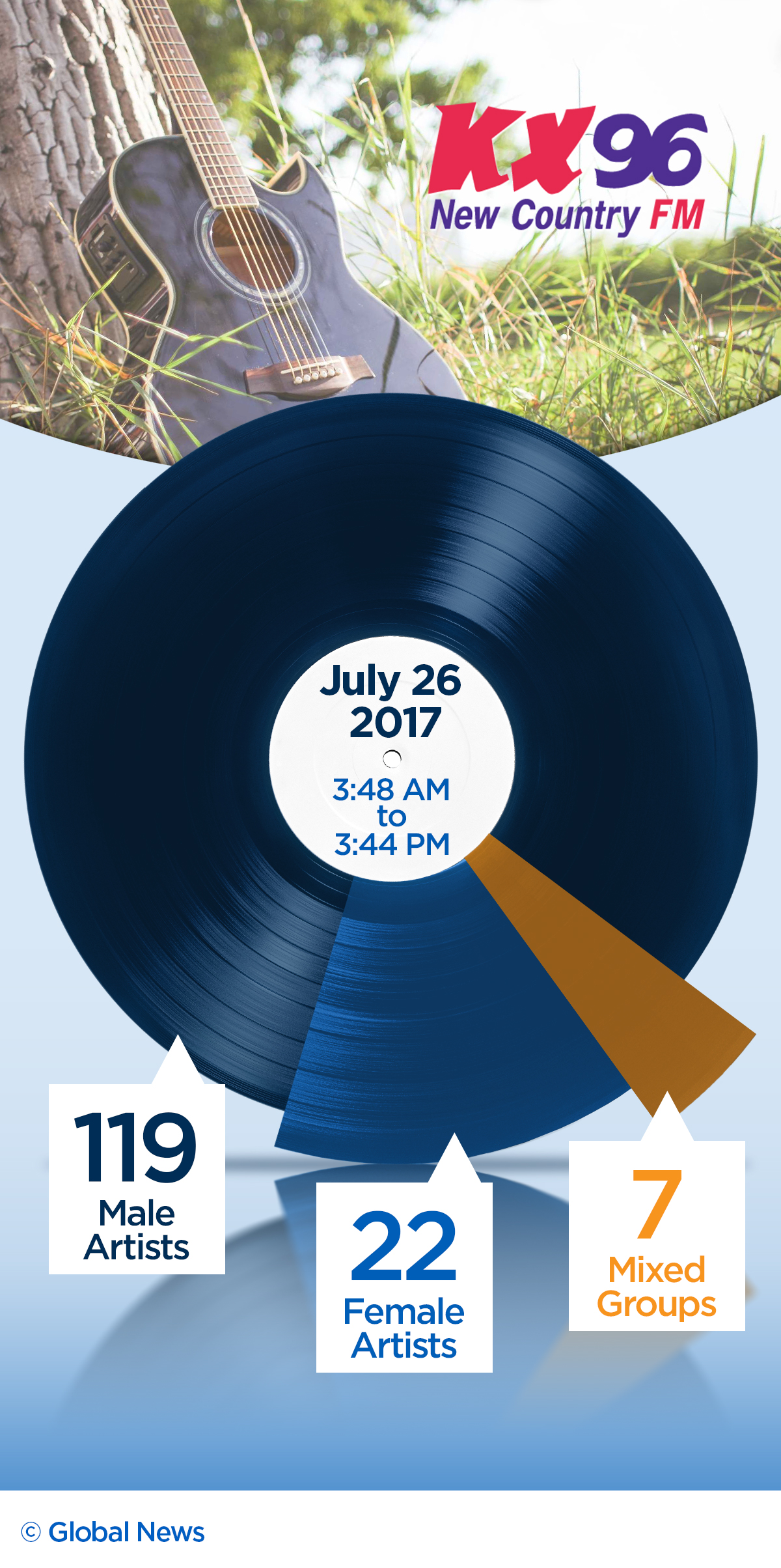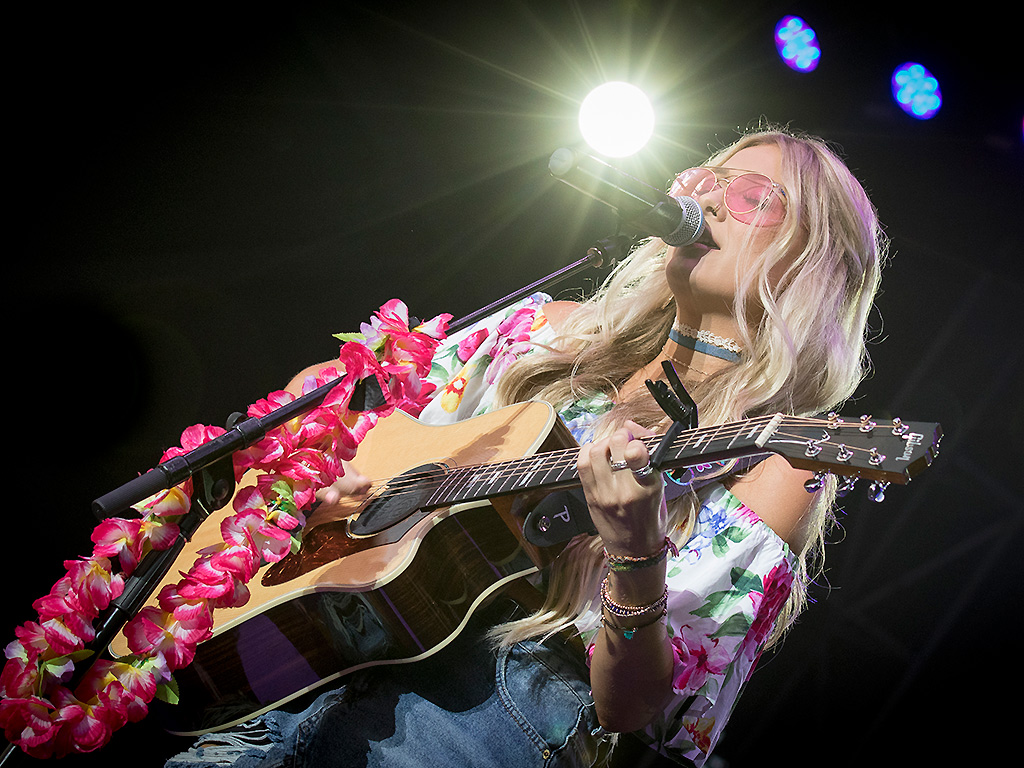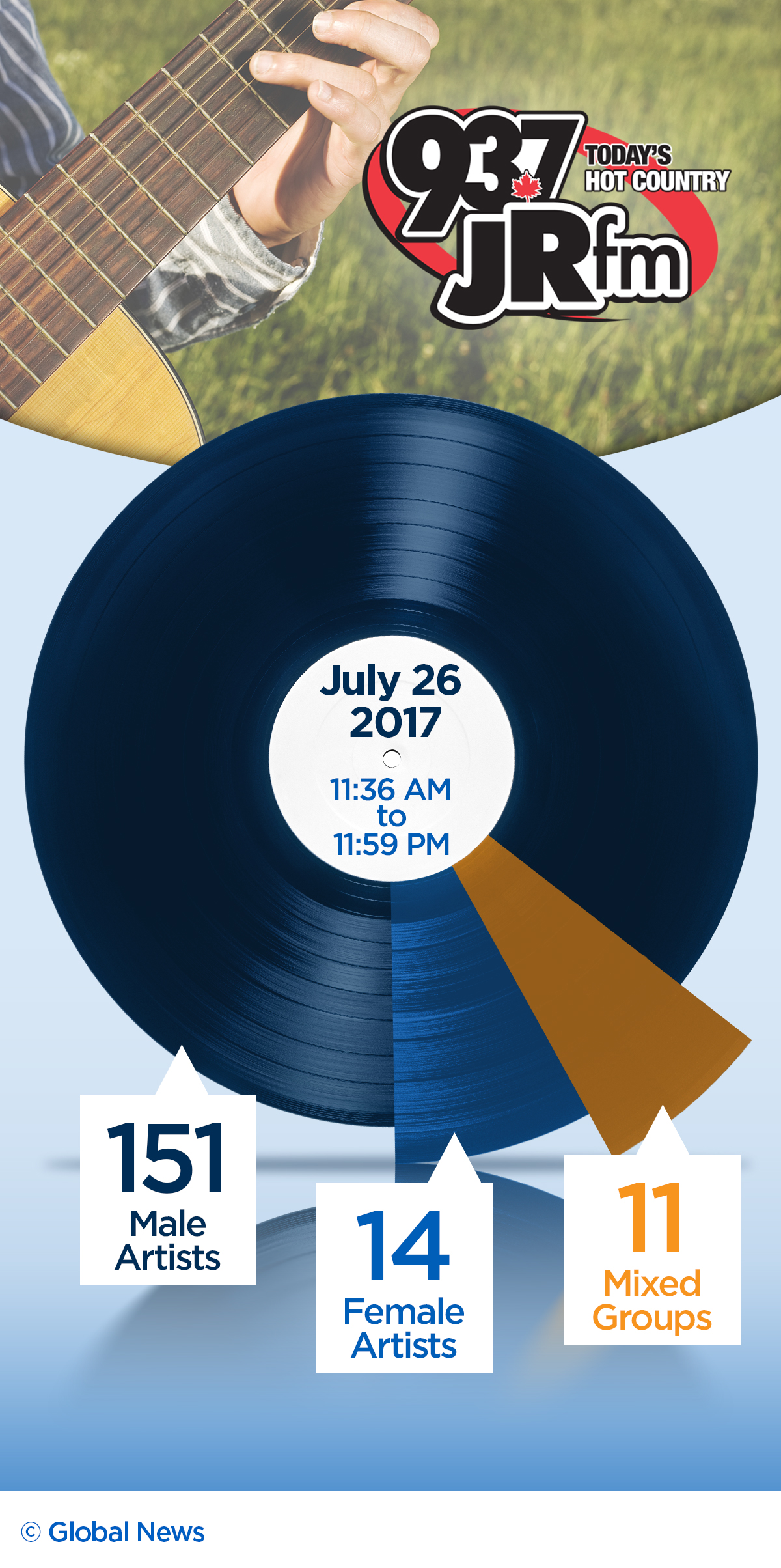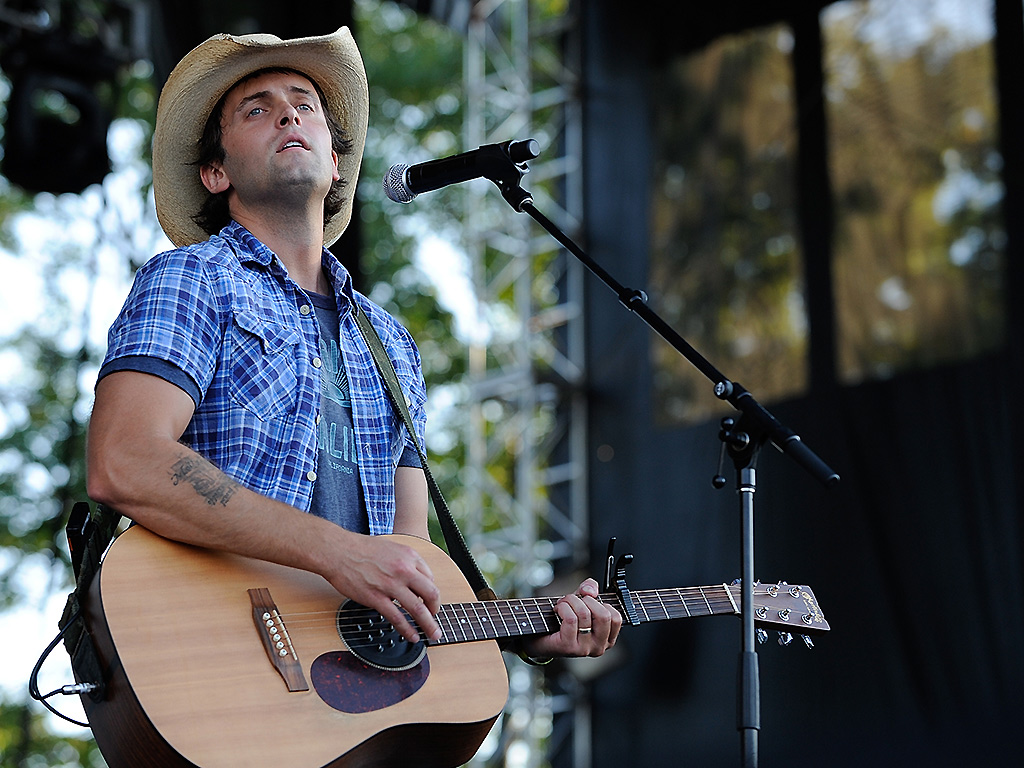Dolly. Reba. Loretta. Patsy. Tammy. Then later, Shania. Faith. Carrie. Miranda.

You don’t even need to write out their full names; if you know anything about country music, you know who they are. These performers have been, and are, part of the very foundation of country music, yet for whatever reason women in the industry are finding themselves marginalized.
Country music is something of a boy’s club, especially on the radio. Whether it harkens back to Nashville (a.k.a. “Southern values”) or if it’s something more insidious in modern culture, female country musicians are having a much harder time making it big. Radio air time — which is key for any emerging artist — is in short supply for women.
This is not a new phenomenon, and has been happening over decades, ebbing and flowing as trends fluctuate. In 2015, radio consultant Keith Hill said in an interview with Country Aircheck, a country radio trade publication, that playing too much female country music equals poor ratings. He also said playing female songs back-to-back isn’t a good idea, basing his point-of-view entirely on listener statistics.
READ MORE: Glen Campbell dead: ‘Rhinestone Cowboy’ singer dies at age 81
“If you want to make ratings in country radio, take females out,” said Hill. “The reason is mainstream country radio generates more quarter-hours from female listeners at the rate of 70 to 75 per cent, and women like male artists. The expectation is we’re principally a male format with a smaller female component. I’ve got about 40 music databases in front of me, and the percentage of females in the one with the most is 19 per cent.”
His next quote triggered what’s known as “Tomatogate,” which became a hot-button debate in the industry.
“Trust me, I play great female records, and we’ve got some right now,” he said. “They’re just not the lettuce in our salad. The lettuce is Luke Bryan and Blake Shelton, Keith Urban and artists like that. The tomatoes of our salad are the females.”
Global News, which is owned by Corus, listened to three different Canadian country-music radio stations for 12 hours and tallied the number of songs by male artists, female artists and mixed groups (containing both male and female members). The results, presented below in three separate graphics, are jarring.
First, we listened to Corus station Country 104, which is based in Woodstock, Ont., from 11:54 a.m. to 11:57 p.m. on July 25. In those 12 hours, there were 162 male songs, 5 mixed-gender group songs and a scant 16 female songs.
Next, we studied the playlist of KX96 FM out of Oshawa, Ont., from 3:48 a.m. to 3:44 p.m. on July 26. Over this early morning-to-mid-afternoon span, the station played 119 male songs, 7 mixed-gender group songs and 22 female songs.
We tuned to west-coast dial 93.7 JR FM, which operates out of Vancouver, B.C., from 11:36 a.m. to 11:59 p.m. on July 26. We discovered the trend is the same no matter where you are in the country: in the 12 hours, 93.7 JR FM played 151 male songs, 11 mixed-gender group songs and only 14 female songs.
By the end of 2016, the country music genre was seeing the highest level of new Canadian listeners in the past five years, when compared to the above genres. Country bars continue to spring up in urban centres and country music festivals (like Ontario’s Boots and Hearts) rapidly grow in popularity.
So what, exactly, is going on here? Industry insiders and country music radio workers, for the most part, agree that it’s a phenomenon dictated by consumer demand. Above all else, let’s not forget, music is a product just like anything else, and the listening audience wants what it wants. Similar to gender pay discrepancy or maligning of women just because, it seems that the problem is one that’s been passed down over generations.
Ron Kitchener, founder of RGK Entertainment Group out of Nashville and Toronto (as well as the country-music artist manager who helped a young Taylor Swift launch into the fame stratosphere) says that it has always been a “challenge” for female artists.
READ MORE: Edmonton goes nuts for country star Garth Brooks
“It seems to be heightened that way. Over time, we’ve gotten into this groove where females are a challenge,” he said. “I don’t know where it started. Certainly, when I began in the business, it seemed like there were as many, if not more, females than males at the time.”
Kitchener started booking bands about 20 years ago, with no intention of getting into country music. But some doors opened and eventually, he ended up in Nashville, right at the time “new” country was starting to boom. It was the era of Garth Brooks, Travis Tritt and Alan Jackson, eventually joined by the likes of Shania Twain and Trisha Yearwood. At that time, Kitchener explains, the pendulum began to swing in the other direction.
“There was a wave there, with Shania, when females were dominating, and it was tougher to get the males in there,” he said. “Country music, in general, always has its ups and downs. It goes up for a period of time and then goes down for a period of time. Then there are waves of harmony bands, then duos, then some kind of combination. All of a sudden there was this cowboy-hat male from Texas that seemed to be the thing. Everyone was running after that kind of performer. Then it was females… every second signing was a new, great female singer. Now we get back into this problem, this current wave of “bro-country” — termed by someone in the media, not in the industry — everybody went after what they thought was the next thing.”
Indeed, at the moment, “bro-country,” a male-led subgenre, featuring country music influenced by other genres like hip-hop and electronic, is enjoying a high. Bands and artists like Florida-Georgia Line, Jason Aldean and Luke Bryan fall under this category.
But as rising Canadian country-music artist Jessica Mitchell points out, there are also many women — besides herself — coming into their own at the moment, including fellow Canucks Meghan Patrick and Madeline Merlo. Mitchell believes that there’s a place for everybody in the genre, and the best bet to ensure women succeed is to support them.
“I think every genre has strengths and weaknesses, and with country it just comes hand-in-hand with being male-dominated, with only a handful of women,” said Mitchell in her smoky voice. “The emotional side of country is coming back — and that’s men and women. In the actual music, if you listen to the songs dominating the radio right now, it’s predominantly emotional. That’s opening a lot of doors, not just for someone like me, but for other strong females. You have to just be strong.”
READ MORE: Country Music Week delivered $8.4 million in economic activity for Ontario: organizers
“Something that’s really important to me is using my voice for good, as well as using my voice to lift the other women in this industry,” she continued.
“We need to support each other rather than claw each other’s eyes out,” she said with a laugh.
Mitchell experienced radio roadblock firsthand with her debut single, Grown Up Things, in October of 2015. A song written about her mother passing away from cancer, she was told it was “too dark” for radio play, and even though it was more of a “happier, upbeat song about death,” it didn’t fit properly into rotation.
Her September 2016 follow-up single, the easier, lighter Workin’ on Whiskey, was the top added Canadian country song on country-music radio at the time of its release. So is it really all substance when it comes to female singers and songs? Is that the problem?
“It’s funny, you do hear ‘No,'” concedes Mitchell. “I’ve heard it many times in my life, so you tend to feel a little bit defeated. With radio initially, I may not have handled it in the best way. It’s just a matter of time, and a great song is a great song. Who cares who it’s by and what it’s about?”
Dean Brody, a Canadian country singer who frequently tries to elevate women in the genre by taking female opening acts with him on his tours, isn’t sure why the gender imbalance still exists.
Like Mitchell, Brody has also written ballads that were rejected for radio play. “I love deep songs, and those are what I used to write when I went to Nashville,” he said. “But then I realized over time that my fans wanted to have a good time. I’ve gotten to the point where I’ll only do two ballads on a record, and the rest are either mid- or up-tempo. To sum it all up, I think it’s a safe bet to go with a happy, hook-y, uptempo song than to take a risk on something that a listener might change the channel on.”
Brad Gibb, radio program director for the past eight years at Corus radio stations FM96 London, Country 104 and 103.1 Fresh Radio, lays some of the blame for the gender discrepancy at the feet of old-school radio programmers, but says that can happen across all industries: legacy employees refuse to let go of the past and embrace more contemporary trends.
On the flip side, people are much more open now, to looking at something for what it is, and for the most part, want to balance out their music log at their radio station. ‘Tomatogate’ woke some stations up, though there are a lot of radio stations that just follow the pack.”
WATCH: The latest country music videos on Global News
As a woman in radio, Leigh Robert, music director and midday host on Corus’ Country 104 (among other stations), thinks it’s frustrating to be a woman in the country music business. Not only does she cite the increased scrutiny on women trying to make it, but she suggests that it may be the female audience itself unknowingly handicapping female artists.
Kitchener points a finger at the entertainment media’s propensity to focus on the negative.
READ MORE: Chris Cornell’s family to raise statue in Seattle in singer’s honour
Trends like bro-country are also more appealing to the young female audience, who grew up with different genres of music like hip-hop and pop, said Robert, and if women want to listen to women, they’re looking for something specific.
“What women are looking for, if they want to hear women on the air, they want to hear strong women, women with a voice or an opinion,” she said. “They want a beautiful, beautiful voice, too. With men, I don’t think the standards are as high, in my opinion.”
Kitchener agrees with Robert’s assessment, saying that women are the ones who buy country music and the ones who listen to the radio, by a majority.
“In terms of radio and getting ratings and making the business what it is now, it was this belief that females wanted the male stars. Maybe the male stars were appealing to them, and the female stars who were busting through were the female-empowered ones, speaking a language, having an idea from a branding standpoint of what they were saying through their music,” he said.
“Females have to work twice as hard to get the female attention. Why that is, I don’t know, but it means they’ve got to say something that’ll get the female listener to say, ‘OK. I’m now going to listen to you in a different way. I’m thinking about you as a person, and as a brand.’ Whereas a male performer, I think women are just listening to the songs.”
Music historian and journalist Alan Cross has seen the same trend over his decades of experience in the radio business.
“There was an old maxim in radio that listeners of both sexes preferred male vocalists to females,” said Cross. “There was even a ‘rule’ that you never scheduled two female artists back-to-back.”
We’ve seen in our radio playlist research that this “rule” isn’t necessarily enforced, but you don’t hear back-to-back female songs very often. Cross says that the rule isn’t in effect at the stations he works for, and in other music genres like pop and R&B, women actually rule the roost.
Another small comfort is that Canada is slightly better than its southern neighbours when it comes to embracing female talent, at least if you don’t take your song message “too far,” like the Dixie Chicks did with then-President George W. Bush in 2003.
READ MORE: Taylor Swift testifies former radio DJ reached under her skirt
Essentially, if you’re a female performer, you have to be original, but not that original; you have to be strong, but not that strong; it’s a delicate tightrope that even the most skilled veterans stumble on.
“Jess Moskaluke won five awards at the Saskatoon Music Awards, and she picked up the Juno in an all-male category for Country Album of the Year,” said Robert. “There is so much talent in Canada right now, male and female. It’s frustrating as a woman. I really want to help these women make a dent in this male-dominated business. I’ve been where they are, I get it! But it’s hard to argue with what the fans and listeners want.”




















Comments